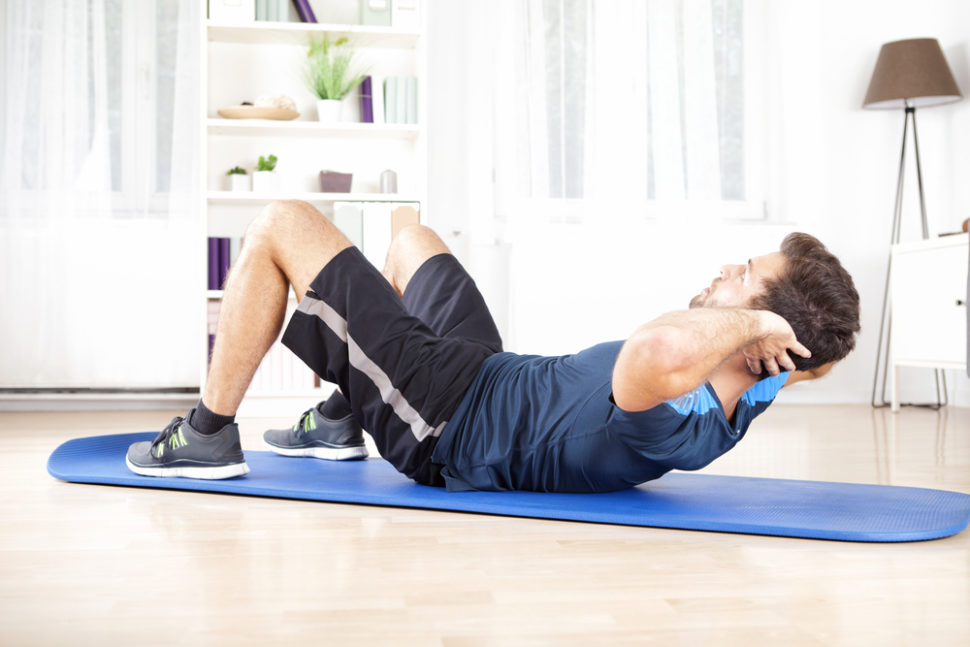Supersets, level intervals & Co: The 7 best bodyweight training training methods
If you train with your own body weight, you need good training methods to make your workouts effective.
Supersets are one of them.
In this article I will introduce you to a total of 7 different bodyweight training training methods and help you to incorporate them into your routines.
If you’ve been reading my blog for a long time, you already know that I’m a fan of bodyweight training.
The advantages of training with your own body weight are simply huge:
- Location independence
- Time independence
- No equipment necessary
- Train and increase strength, endurance, coordination and flexibility at the same time
- Possible alone or in groups
- And many more

The best bodyweight training methods at a glance
In my youth, I – like you might also – did sit-ups and push-ups diligently to look good for the opposite sex without ever hearing the term bodyweight training.
However, without a plan and method.
This is exactly why training methods are so important.The successes were therefore rather minor and if so, then only externally visible, but not in terms of performance, flexibility and technology.
They help you focus your training on your goals. And in combination with one another, they form a training plan.
That means: With a few exercises and training methods you can create your own training plan with a little experience.
An important step to become independent of trainers, apps and studios and to achieve your goal of getting really fit forever.
Here are my 7 top recommendations for training methods with your own body weight.
1. Gentle strength (endurance) training
A training method that is particularly recommended for beginners.
The good thing about it: If you are still a beginner, you will also be able to achieve strength gains and fat loss with this method.
You also give your passive structures time due to the relatively high number of repetitions and the associated lower intensity. Time for tendons, ligaments and connective tissue to get used to the strain and to be ready for higher tasks without risking injuries.
How does gentle strength training work in practice?
Choose the exercise so that you can do 20 repetitions without a break. You shouldn’t go to muscle failure, but still have reserves for further repetitions (maximum 5).
Example push-ups: If you can only manage 10 reps of the classic variant, you have to look for an easier variant. In this case, simply raise the position of your hands until the intensity is right. For example, you can put your hands on an armchair or table. This will reduce the weight on your arms and allow you to do more repetitions without a break.
You can do 2 to 3 sets of an exercise. You pause 2-3 minutes per set. But you can also combine different muscle groups (legs, core, pulling, pushing) and thus almost do without a break in sentences. Choose from 3 to 4 different exercises per training session.
2. Step intervals
One training method that you can do with little training experience is step intervals. Above all, you train your muscular endurance. And you will soon be able to do more repetitions of an exercise.
How do you implement level intervals in your training practice?
As the name suggests, this method consists of an increasing number of repetitions combined with short breaks.
Choose the exercise so that you have about 10 to Can do 15 reps without a break.
Then you start with one repetition, take a short break, and then do two repetitions. Then there is another short pause, then 3 repetitions, pause, 4 repetitions, pause, 5 repetitions, and so on. When you get to the point where another repetition would lead to muscle failure – in other words, you can’t get up – you start counting backward.
The breaks are based on the number of repetitions: the more repetitions, the longer the break. Your time limit per round: 7.5 minutes. When the time is up, start the next exercise. If you get back to 1 before the time expires, you will start a new level by the end of the 7.5 minutes.
It’s tough but effective.
It is best to take 3-4 exercises and start with your first level interval.
3. Classic strength training (hypertrophy training)
With classic strength training, the main aim is to achieve strength and muscle gains. As current research shows, fewer than 15 repetitions are best – 8 to 12 repetitions are usually recommended. You can find out more about it in this article from me.
How do you put this into practice?
You first have to choose exercises of which you can do between 8 and 12 repetitions.
With this training method, you go to failure. This means that you won’t be able to do another repetition without a break. Then you take a 2 to 3-minute break in sentences and add another sentence or two.
For example, if you can do 20 classic pushups, you have to make the exercise a little more difficult. You do this by raising your legs a little (for example by placing them on an armchair) and thereby putting more weight on your arms.
4. interval blocks
Interval sets are a great way to increase your strength and muscle volume. They are structured in a similar way to classic strength training with the difference that break and exercise time are related to one another.
How does that work in practice?
You do an exercise with 6-12 repetitions and should go to your limit. So if you could do a lot more than 12 reps, you need to make the exercise harder.
After you have done 6-12 repetitions of the first exercise, pause until 3 minutes are up. Then you start with the second sentence and pause again. The third movement starts at the 6th minute.
This means that you do three sets for an exercise and that it takes a total of 9 minutes.
You can choose a total of 3-4 exercises, which you work through one after the other in this way.
5. Supersets
Supersets are an advanced method that demands everything from your muscles because you combine two similar exercises into one superset.
With this you can effectively increase your strength.
How do you put this into practice?
Then you do 1-5 repetitions of the more difficult exercise (in this case triceps extension) and of the easier one 6-12 repetitions immediately afterward and without a break. You choose 2 exercises that strengthen similar muscle groups: For example, pushups and triceps extensions (you can see what triceps extensions are in this video). Both strong triceps and chest in different ways.
When you have done that, take a break until four minutes are up. Then you do another set of the same exercises. Then pause again.
At minute 8 the next superset begins with two new exercises. You can do 3 to 4 supersets in a row, each with a pair of exercises.
6. Challenge method
The challenge method has been an integral part of bodyweight training at least since the Freeletics app.
It is particularly recommended for advanced users, as mastering the technique also plays an important role in fatigue.
It is mainly used for fat loss, increasing the performance of the cardiovascular system, but also for increasing strength. Of course, the choice of exercises and the number of repetitions required are decisive.
How can you integrate this into your training?
For example, I have also included workouts in my bodyweight training plans that are based on the challenge method.The challenge method is based on completing a certain number of exercises with fixed numbers of repetitions (read: whole workouts) in the shortest possible time with the right technique.
For example the “Volcano” workout (it is included in the professional version). You have to do 3 rounds of 10 pull-ups, 20 pikes (with raised legs), 30 one-armed door pulls, 40 folding knives, 50 deep squats and a break of 60 seconds per round.
As soon as possible. But with good technique.
You choose your own breaks depending on your exhaustion.

7. High-intensity sentences (Tabata)
The Tabata method is only for advanced users, as it works with the highest intensities. You not only increase your strength but also your endurance and boost your metabolism and thus also your fat loss.
How do you put this into practice?
Originally the Tabata method was used in the running area. You sprint for 20 seconds and then take a 10-second break. You repeat this 8 times so that you only train for 4 minutes in total (excluding warm-up). Then you can add a slightly longer break (a few minutes) and start one or two more intense rounds.
You can use not only sprinting but also all bodyweight exercises that stress your entire body. The classics are the burpees. You can also do jump squats, jump lunges, etc.
It is important that you can keep the level high but constant for the 4 minutes and not drop sharply towards the end because you can no longer. Then you went too high at the beginning.
Conclusion
With the right exercises – by the way, you will find some good ones among my strengthening exercises without equipment – and with the training methods presented here, you can create your own training units with a little training experience.
If you want to have a whole training plan, I recommend my three bodyweight training plans. There is one for beginners, one for advanced and one for professionals. You will also work with some of the methods presented here. You can download it here for free.
